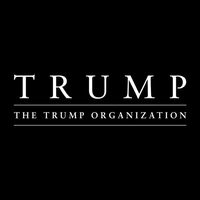The Crossroads of Diplomacy: U.S.-Mexico Relations in a Trump Era
January 8, 2025, 9:36 pm

Location: United States, New York
Employees: 10001+
Founded date: 1976
Total raised: $20B
The relationship between the United States and Mexico is like a delicate dance. It requires balance, trust, and mutual respect. As the U.S. prepares for another Trump presidency, the rhythm of this dance is about to change. The recent remarks from the departing U.S. ambassador to Mexico, Ken Salazar, highlight the complexities of this relationship. He spoke of “historic cooperation” in areas like security, migration, and economic development. Yet, beneath the surface, tensions simmer.
The U.S. and Mexico share a nearly 2,000-mile border. This line is not just a geographical divide; it’s a lifeline. Trade between the two nations amounts to hundreds of billions of dollars annually. A strong diplomatic relationship is crucial. It’s the backbone of American foreign policy. But as Trump steps back into the spotlight, the future of this partnership hangs in the balance.
Under President Andrés Manuel López Obrador, the relationship was marked by cooperation. Mexico played a pivotal role in curbing migration flows to the U.S. However, this partnership faced challenges. Salazar’s criticism of López Obrador’s controversial judicial reforms created friction. The dramatic capture of narco boss Ismael “El Mayo” Zambada further strained ties. At one point, López Obrador even put relations with the U.S. Embassy “on pause.”
Now, with Trump’s promises of mass deportations and tariffs looming, the stakes are higher. The question arises: can the new Mexican president, Claudia Sheinbaum, maintain the delicate balance? Sheinbaum’s approach has been stern yet collaborative. But the shadows of Trump’s populism loom large. The relationship may not be as amicable as it once was.
In the backdrop, the U.S. is grappling with its own political upheaval. The recent departure of Canadian Prime Minister Justin Trudeau adds another layer of complexity. Canada is often seen as the U.S.’s closest ally. Yet, Trump’s rhetoric has painted Canada as the “51st state.” His threats of 25% tariffs on Canadian goods are not mere bluster. They signal a potential trade war. Canada has vowed to retaliate.
As the political landscape shifts, Canada faces uncertainty. The Liberal Party must elect a new leader before Parliament resumes. This urgency is palpable. The opposition parties are poised to bring down the government at the first opportunity. The new leader may not hold the position for long. A spring election could favor the Conservative Party, led by Pierre Poilievre, a populist firebrand.
The potential candidates for leadership are intriguing. Mark Carney, a former central bank governor, is a strong contender. His qualifications are impressive, but his lack of political experience raises questions. Chrystia Freeland, the former finance minister, is also in the mix. Her relationship with Trump is fraught. He has labeled her “totally toxic.”
Dominic LeBlanc, the new finance minister, is another name to watch. He has close ties to Trudeau and a history with the U.S. But the clock is ticking. Recent polls show the Liberals trailing the Conservatives significantly. The political landscape is shifting beneath their feet.
As the U.S. and Canada navigate these turbulent waters, the implications for Mexico are profound. The interconnectedness of these nations is undeniable. Decisions made in Washington or Ottawa ripple through Mexico City. The potential for a trade war with Canada could have spillover effects on Mexico. Tariffs could disrupt supply chains and economic stability.
The U.S.-Mexico relationship is not just about trade. It encompasses security, migration, and cultural ties. The fight against fentanyl production is a shared concern. Both nations must collaborate to combat this crisis. The stakes are high. Lives are at risk.
As Trump prepares to take office again, the diplomatic landscape is fraught with uncertainty. The U.S. must tread carefully. A misstep could unravel years of progress. The dance between the U.S. and Mexico requires finesse. It’s a tightrope walk, balancing national interests with regional stability.
In conclusion, the future of U.S.-Mexico relations is at a crossroads. The arrival of Trump heralds a new era. The potential for conflict looms large. Yet, the foundation of cooperation remains. Both nations must navigate this intricate web of diplomacy with care. The world is watching. The stakes are high. The dance continues, but the music may change.
The U.S. and Mexico share a nearly 2,000-mile border. This line is not just a geographical divide; it’s a lifeline. Trade between the two nations amounts to hundreds of billions of dollars annually. A strong diplomatic relationship is crucial. It’s the backbone of American foreign policy. But as Trump steps back into the spotlight, the future of this partnership hangs in the balance.
Under President Andrés Manuel López Obrador, the relationship was marked by cooperation. Mexico played a pivotal role in curbing migration flows to the U.S. However, this partnership faced challenges. Salazar’s criticism of López Obrador’s controversial judicial reforms created friction. The dramatic capture of narco boss Ismael “El Mayo” Zambada further strained ties. At one point, López Obrador even put relations with the U.S. Embassy “on pause.”
Now, with Trump’s promises of mass deportations and tariffs looming, the stakes are higher. The question arises: can the new Mexican president, Claudia Sheinbaum, maintain the delicate balance? Sheinbaum’s approach has been stern yet collaborative. But the shadows of Trump’s populism loom large. The relationship may not be as amicable as it once was.
In the backdrop, the U.S. is grappling with its own political upheaval. The recent departure of Canadian Prime Minister Justin Trudeau adds another layer of complexity. Canada is often seen as the U.S.’s closest ally. Yet, Trump’s rhetoric has painted Canada as the “51st state.” His threats of 25% tariffs on Canadian goods are not mere bluster. They signal a potential trade war. Canada has vowed to retaliate.
As the political landscape shifts, Canada faces uncertainty. The Liberal Party must elect a new leader before Parliament resumes. This urgency is palpable. The opposition parties are poised to bring down the government at the first opportunity. The new leader may not hold the position for long. A spring election could favor the Conservative Party, led by Pierre Poilievre, a populist firebrand.
The potential candidates for leadership are intriguing. Mark Carney, a former central bank governor, is a strong contender. His qualifications are impressive, but his lack of political experience raises questions. Chrystia Freeland, the former finance minister, is also in the mix. Her relationship with Trump is fraught. He has labeled her “totally toxic.”
Dominic LeBlanc, the new finance minister, is another name to watch. He has close ties to Trudeau and a history with the U.S. But the clock is ticking. Recent polls show the Liberals trailing the Conservatives significantly. The political landscape is shifting beneath their feet.
As the U.S. and Canada navigate these turbulent waters, the implications for Mexico are profound. The interconnectedness of these nations is undeniable. Decisions made in Washington or Ottawa ripple through Mexico City. The potential for a trade war with Canada could have spillover effects on Mexico. Tariffs could disrupt supply chains and economic stability.
The U.S.-Mexico relationship is not just about trade. It encompasses security, migration, and cultural ties. The fight against fentanyl production is a shared concern. Both nations must collaborate to combat this crisis. The stakes are high. Lives are at risk.
As Trump prepares to take office again, the diplomatic landscape is fraught with uncertainty. The U.S. must tread carefully. A misstep could unravel years of progress. The dance between the U.S. and Mexico requires finesse. It’s a tightrope walk, balancing national interests with regional stability.
In conclusion, the future of U.S.-Mexico relations is at a crossroads. The arrival of Trump heralds a new era. The potential for conflict looms large. Yet, the foundation of cooperation remains. Both nations must navigate this intricate web of diplomacy with care. The world is watching. The stakes are high. The dance continues, but the music may change.
